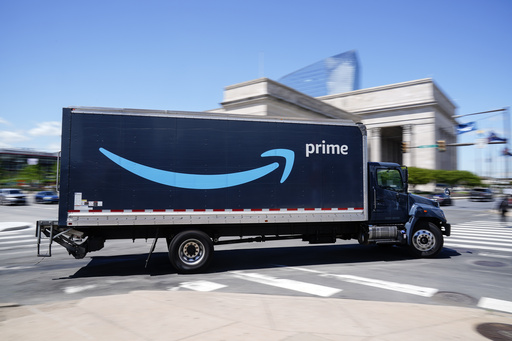
Amazon announced on Thursday that it surpassed expectations with its revenue and profits during the holiday shopping season. However, shares fell in after-hours trading as the company provided a less-than-optimistic forecast for the upcoming quarter.
Based in Seattle, the e-commerce and tech giant reported that its revenue for the October to December period reached $187.8 billion, marking a 10% increase compared to the same timeframe in the previous year. Additionally, the company reported profits of $20 billion, translating to earnings per share of $1.86, exceeding analysts’ predictions of $1.49 as surveyed by FactSet.
Despite the solid performance, Amazon anticipates revenue for the current quarter to range between $151 billion and $155.5 billion, falling short of the $158.56 billion forecasted by analysts. This guidance notes that there will be significant adverse effects from fluctuating foreign exchange rates.
Amazon continues to dominate the online retail space in the U.S. and has consistently benefited from increased consumer spending during the holiday season. In alignment with previous years, the company commenced holiday promotions in October to attract early shoppers, also extending discounts during key sales events like Black Friday and Cyber Monday.
The company’s online sales generated $75.5 billion in revenue, up 7% compared to the same quarter last year. The broader retail landscape also reported stronger-than-anticipated holiday sales in November and December, buoyed by decreased inflation on holiday items that encouraged consumer purchases, as stated by The National Retail Federation. Adobe Analytics further revealed that online shopping reached unprecedented levels during this period.
Revenue from Amazon Web Services, the company’s leading cloud computing division, increased by 19% in the fourth quarter; however, it slightly fell short of analyst expectations. Amazon is also a key contender in the rapidly evolving field of generative artificial intelligence. Like many technology firms, Amazon is significantly investing in AI and enhancing data centers that support both AI and cloud services. The company has also directed resources towards developing its own computer chips, as well as those from Nvidia, and has begun implementing its AI models into various business operations.
In the fourth quarter, Amazon reported capital expenditures of $27.8 billion on property and equipment, a notable rise compared to the same period in the previous year. During an analyst call, CEO Andy Jassy revealed that $26.3 billion of that spending was primarily focused on AI and AWS. Jassy remarked that almost every application known today is expected to incorporate AI technology in the future, asserting that this strategy will benefit the business and its stakeholders over the medium to long term.
Jassy also expressed admiration for DeepSeek, a Chinese AI firm recently acclaimed for its chatbot, which has become the most downloaded app in the U.S.
The release of Amazon’s quarterly results arrives amidst a retail sector grappling with a new 10% tariff imposed by President Trump on imports from China. Tariffs affecting Canada and Mexico are currently on pause. Trump also revoked a trade exemption that allowed low-value shipments from China to evade duties, a rule that previously benefited Chinese-founded e-commerce companies such as Shein and Temu.
While these tariffs could present advantages for Amazon by elevating costs for its competitors, they may also pose challenges for Chinese sellers who rely on the platform to reach American consumers. Moreover, it could result in price increases on Amazon Haul, its recently launched platform aimed at selling low-cost products directly from China, which was initiated in response to the offerings from Shein and Temu.
Additionally, Morgan Stanley analysts noted that Amazon’s first-party retail sector, which comprises products sourced from manufacturers, is the most susceptible to these tariffs, estimating that approximately 25% of items sold through this channel originate from China.

